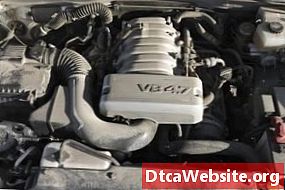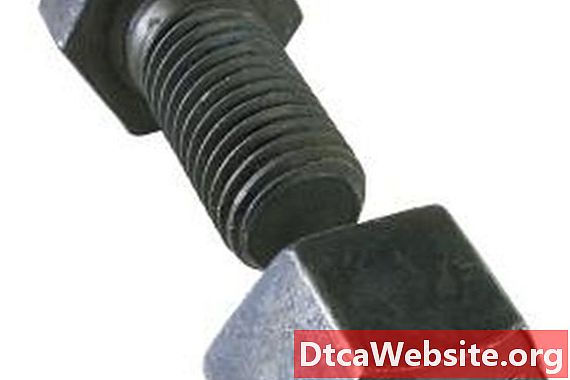
Contenu

Rambler, an American car maker of the 1950s, changed its name to American Motors Corporation (AMC) in 1954. AMC continued to refer to some of its cars as Ramblers into the 1960s. The AMC small block V-8 was introduced in some of its 1965 cars. This engine was enlarged several times over the next few years as AMCs vehicles got larger and required larger displacement power plants. The 360 was first introduced in 1970 as a replacement of the 343 V-8, and was used as late as the early 1990s in the Jeep Grand Wagoneer.
General Specifications
The AMC 360-cubic inch displacement V-8 engine was an overhead-valve design with two valves, one intake and one exhaust, per cylinder. The cylinder bore was 4.08 inches and the crankshaft stroke was 3.44 inches. The bore spacing on the engine block was 4.75 inches center-to-center. The normal oil pressure for this engine is 46 pounds per square inch. The compression ratio was 9.0 to 1 in 1970, 8.5 to 1 in 1971 and 1972, and 8.25:1 in all later versions.
Power Outputs
Power outputs varied from year to year over this engines long production run. Early versions built in 1970 and 1971 have higher output ratings than the 1972 and later versions, but this is mainly due to the rating method used. For instance the 1970 and 1971 360 with a two-barrel carburetor had 245 horsepower at 4,400 rpm and 365 pound feet of torque at 2,600 rpm, while 1972 and later versions had 175 horsepower at 4,000 rpm and 285 pound feet of torque at 2,400 rpm. Horsepower and torque rating continued to go down slightly through the 1970s as more pollution equipment was added and leaner tuning was adapted to reduce emissions. Four-barrel carburetor equipped 360 engines were available until 1976 and had slightly higher horsepower and torque ratings than the two-barrel version.
Torque Specifications
When assembling or rebuilding an AMC 360 V-8, it is imperative to torque the retaining bolts for the various parts to the correct tightness. The cylinder head bolts should be torqued to between 100 and 110 pound-feet. Connecting rod bolts require 25 to 30 pound feet of torque. The main bearing cap bolts need to be tightened to between 95 and 105 pound-feet. The harmonic balancer mounted to the front of the crankshaft needs to be tightened to between 53 and 58 pound-feet. The flywheel retaining bolts at the rear of the block need to be tightened to between 100 and 110 pound feet of torque. The intake manifold bolts on top of the block need tightened to between 40 and 45 foot pounds, while the exhaust manifold bolts on each side of the block only require 23 to 27 pound feet of torque.


